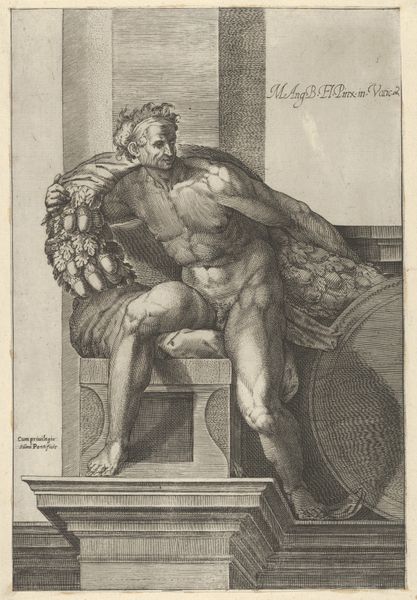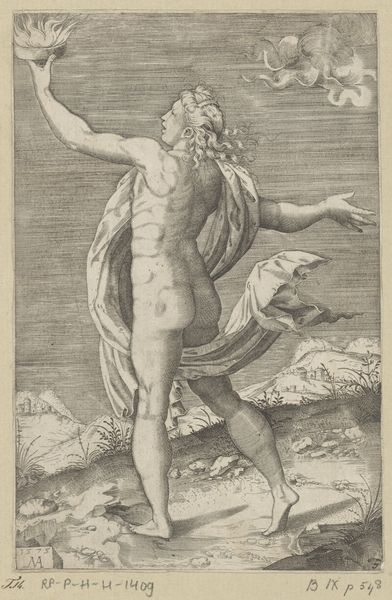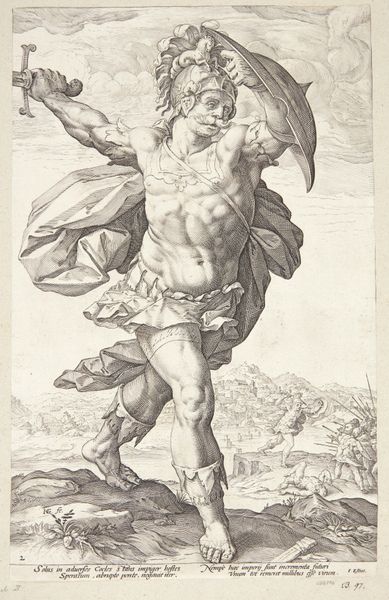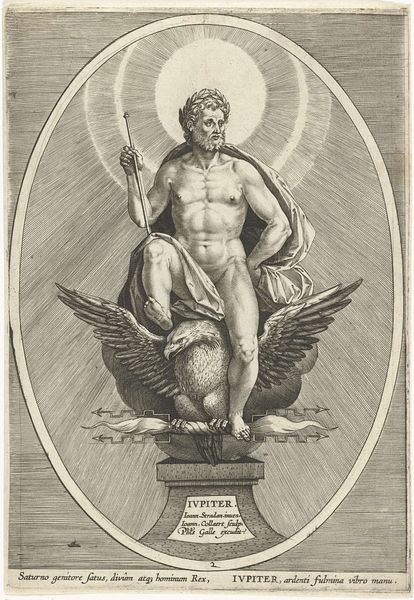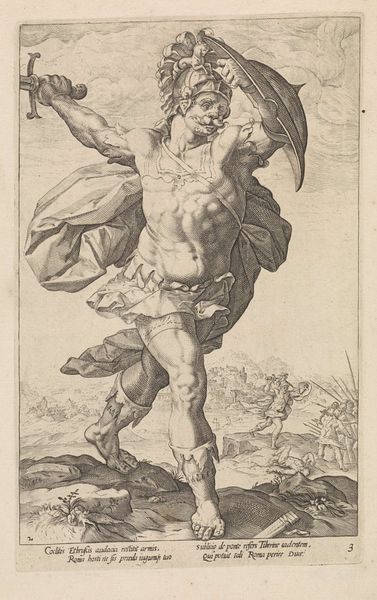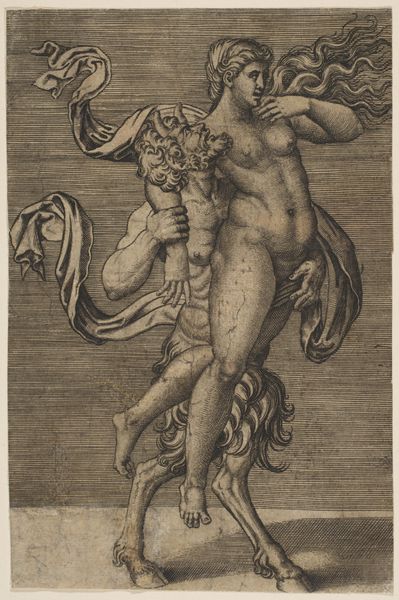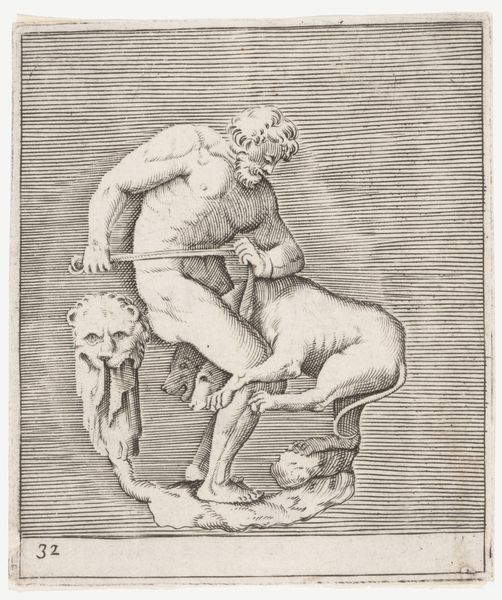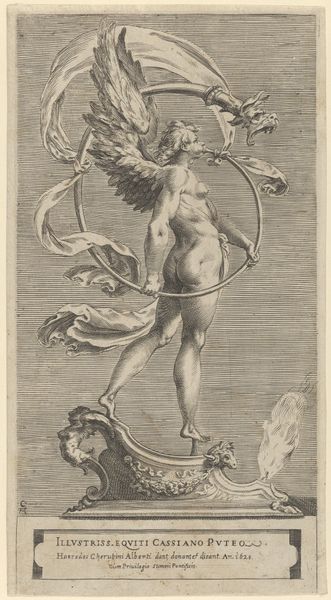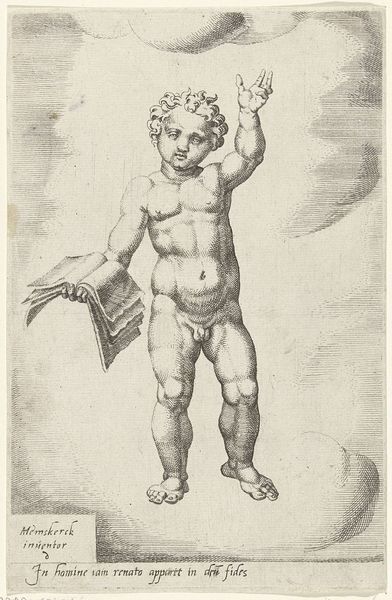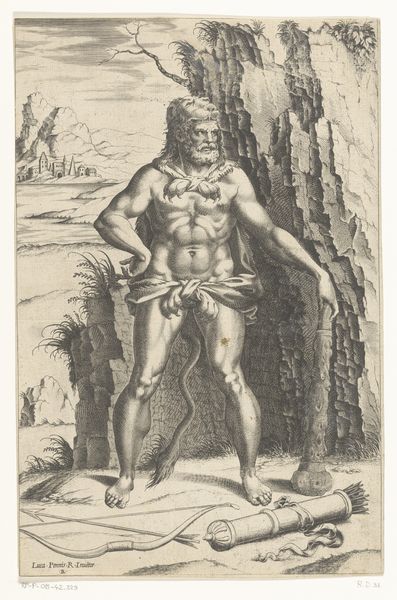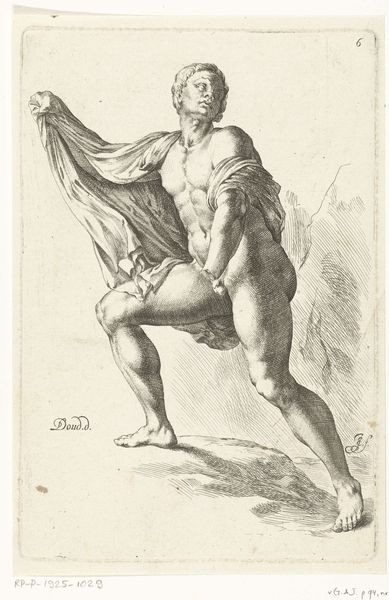
Plate 2: Jupiter; statue of the nude god seated on an eagle, holding a double trident; from 'Statues of Roman Gods' after Jacques Jonghelinck 1586
0:00
0:00
drawing, print, engraving
#
drawing
# print
#
mannerism
#
figuration
#
mythology
#
nude
#
engraving
Dimensions: Sheet (Trimmed): 9 13/16 × 6 3/8 in. (25 × 16.2 cm)
Copyright: Public Domain
Philips Galle made this engraving of Jupiter, the king of the Roman gods, in the late 16th century. The print is part of a series depicting classical deities. The image revives the classical interest in the ideal human form that was a touchstone of the Italian Renaissance. Here, Jupiter is seated on an eagle, holding a double trident. The work was made in the Netherlands, a region then under Spanish rule and deeply divided by religious conflict. Galle was closely associated with the Catholic Church and his workshop produced many images in support of its doctrines. This print of Jupiter, while seemingly secular, participated in the wider intellectual culture that sought to revive classical antiquity. It would have appealed to the educated elite of the time. Understanding such an image today requires us to look into the intellectual, political, and religious history of the period and to consider the place of the printmaking workshop in the production of such imagery.
Comments
No comments
Be the first to comment and join the conversation on the ultimate creative platform.
